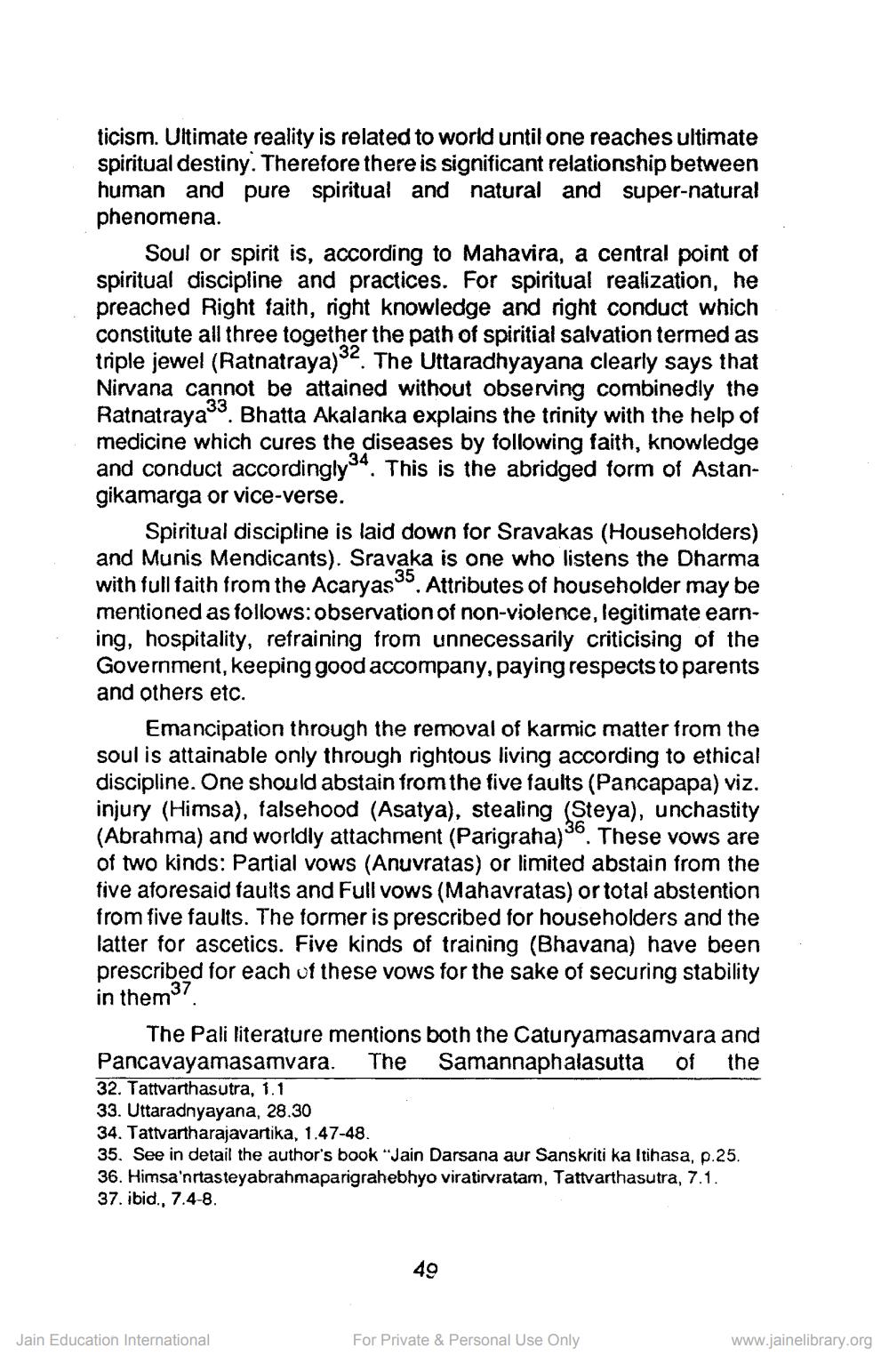________________
ticism. Ultimate reality is related to world until one reaches ultimate spiritual destiny. Therefore there is significant relationship between human and pure spiritual and natural and super-natural phenomena.
Soul or spirit is, according to Mahavira, a central point of spiritual discipline and practices. For spiritual realization, he preached Right faith, right knowledge and right conduct which constitute all three together the path of spiritial salvation termed as triple jewel (Ratnatraya) 2. The Uttaradhyayana clearly says that Nirvana cannot be attained without observing combinedly the Ratnatraya. Bhatta Akalanka explains the trinity with the help of medicine which cures the diseases by following faith, knowledge and conduct accordingly. This is the abridged form of Astangikamarga or vice-verse.
Spiritual discipline is laid down for Sravakas (Householders) and Munis Mendicants). Sravaka is one who listens the Dharma with full faith from the Acaryas". Attributes of householder may be mentioned as follows: observation of non-violence, legitimate earning, hospitality, refraining from unnecessarily criticising of the Government, keeping good accompany, paying respects to parents and others etc.
Emancipation through the removal of karmic matter from the soul is attainable only through rightous living according to ethical discipline. One should abstain from the five faults (Pancapapa) viz. injury (Himsa), falsehood (Asatya), stealing (Steya), unchastity (Abrahma) and worldly attachment (Parigraha) 36. These vows are of two kinds: Partial vows (Anuvratas) or limited abstain from the five aforesaid faults and Full vows (Mahavratas) or total abstention from five faults. The former is prescribed for householders and the latter for ascetics. Five kinds of training (Bhavana) have been prescribed for each of these vows for the sake of securing stability in them
The Pali literature mentions both the Caturyamasamvara and Pancavayamasamvara. The Samannaphalasutta of the 32. Tattvarthasutra, 1.1 33. Uttaradnyayana, 28.30 34. Tattvartharajavartika, 1.47-48. 35. See in detail the author's book “Jain Darsana aur Sanskriti ka Itihasa, p.25. 36. Himsa'nrtasteyabrahmaparigrahebhyo viratirvratam, Tattvarthasutra, 7.1. 37. ibid., 7.4-8.
49
Jain Education International
For Private & Personal Use Only
www.jainelibrary.org




